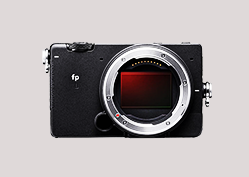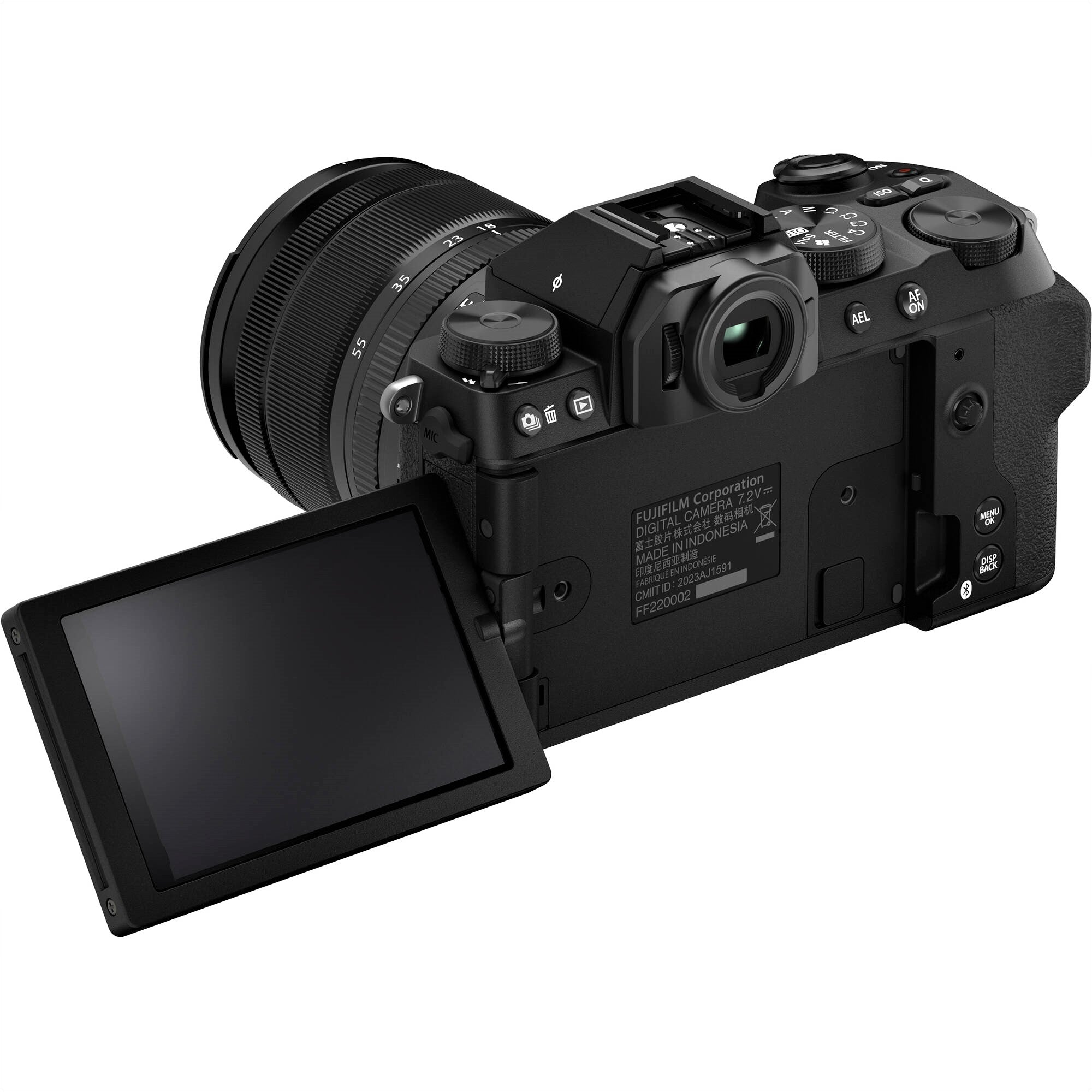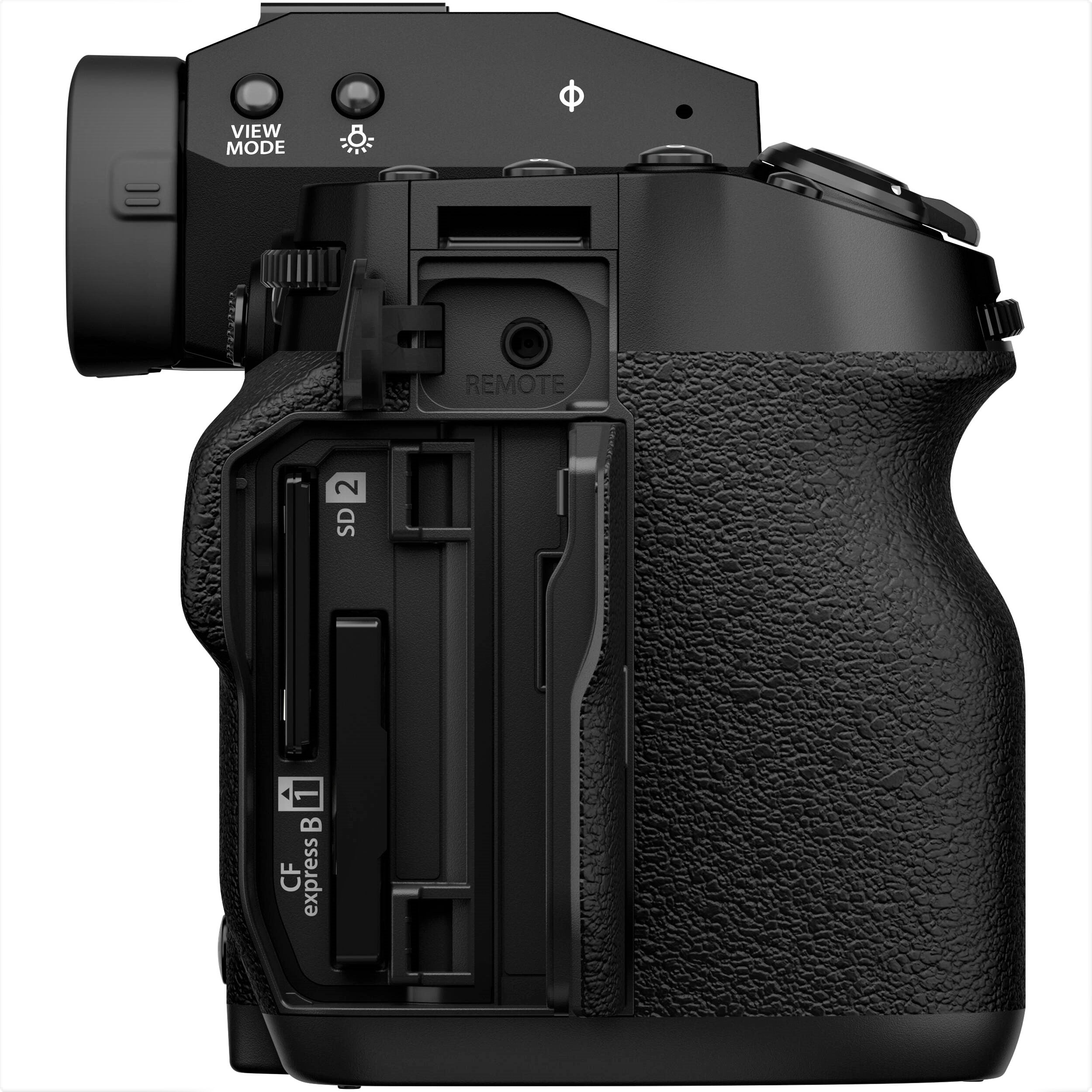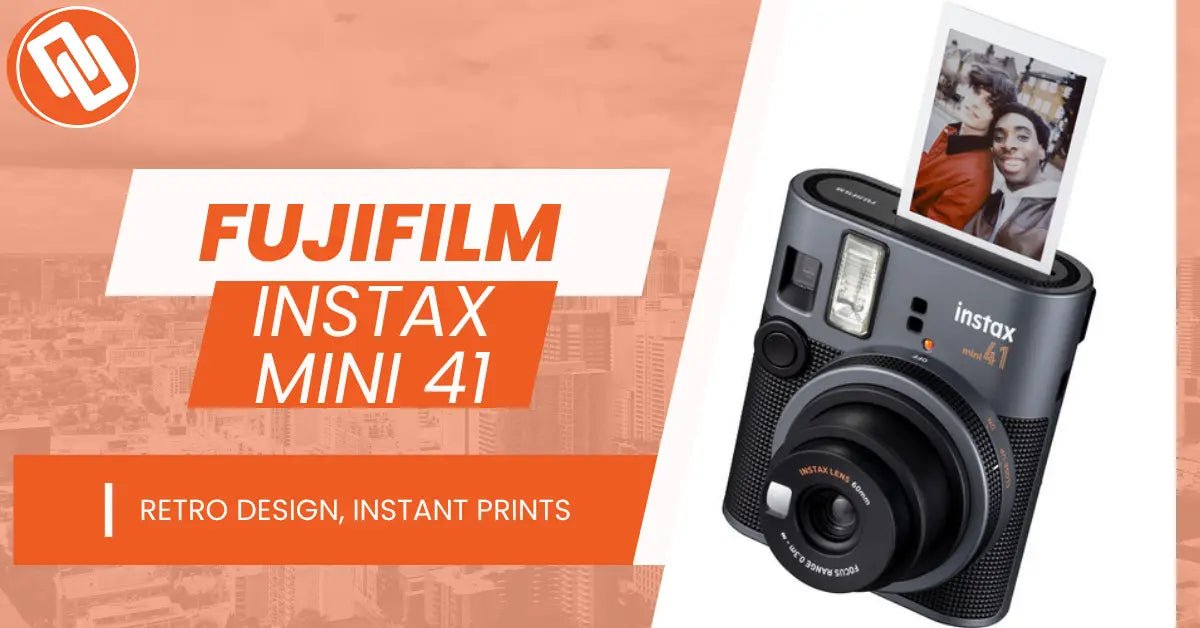Instant photography has experienced a major revival in recent years, with Fujifilm Instax and Polaroid cameras leading the charge. While both offer the joy of holding a printed photo moments after pressing the shutter, they differ in style, image quality, film size, and overall experience. Whether you’re buying for personal memories, creative projects, or gifting, understanding the Instax vs Polaroid debate will help you choose the right one.
Understanding the Instant Photography Comeback
Instant cameras first wowed people decades ago. Polaroid made it possible to snap a photo and hold the print within minutes. It felt magical—click, wait, and there it was, a memory in your hand. But when digital cameras and smartphones took over in the 2000s—faster, cheaper, and easier to share—instant photos seemed to vanish. Many thought they were gone for good.
Yet here we are. Instant photography is back. Why? Nostalgia helps, sure. But there’s more to it. Today, most photos stay trapped on screens. People want something real. Something they can touch, hang on a wall, or slip into a book. It’s not about competing with digital. It’s about balance: quick convenience on one side, physical keepsakes on the other.
Polaroid, once written off, found a way forward. The brand kept its vintage look but added modern perks. Better image quality. Rechargeable batteries. Bluetooth apps for creative tweaks. Old charm, new tools. Owning a Polaroid today feels less like owning just a camera and more like choosing a lifestyle.
Fujifilm took a different route with Instax. It’s fun, affordable, and everywhere. Teens love it. Casual shooters love it. Even pros use it as a playful side tool. Prints are consistent, the cameras come in bright designs, and innovation keeps rolling—like hybrid models that let you preview before you print. Instax now leads the market by far.
But the real reason people love instant cameras again? The experience. With digital, you can retake endlessly. With instant, you get one shot. You press the shutter, commit to it, and wait. The photo slowly appears, flaws and all. Then comes the best part: sharing it. Handing a print to a friend. Watching someone’s face light up. It’s not just a photo; it’s a little event.
In the end, instant photography is about joy. It mixes old and new, fast and slow, perfect and imperfect. Whether you love the Polaroid vibe or the easy charm of Instax, one thing’s clear: instant photography isn’t just alive—it’s thriving.
Fujifilm Instax: A Modern Take on Instant Prints
Fujifilm Instax makes instant photography fun again. Digital photos sit on phones. These prints? They land in your hand in seconds. Small. Tangible. Easy to share. Easy to keep. That’s why people love them.
The appeal is clear—nostalgia meets style. Instax bridges the gap between old-school charm and modern design. Kids, hobbyists, even pros use it. Not for perfection, but for joy.
Fujifilm has sold over 100 million Instax cameras and printers globally since 1998, highlighting the brand’s massive popularity and enduring legacy in the instant photography market (Fujifilm press release).
Formats That Fit Every Style
Instax comes in three film types: Mini, Square, and Wide.
-
Mini is small and wallet-ready.
-
Square feels like Instagram but real.
-
Wide gives you room for groups or sweeping shots.
Each format suits a different mood. You pick.
Why Instax Works
-
Colors That Pop. Instax prints glow. Sharp, bright, and bold. Perfect for parties, travels, or art projects.
-
Formats to Choose From. Slip a Mini into your journal. Snap a Square for social vibes. Use Wide when the moment is big. Flexibility is the point.
-
Affordable Film. Polaroid can be pricey. Instax film isn’t. Multipacks make it easy to stock up. More prints, less worry.
-
Simple to Use. Automatic settings. Built-in flash. Just point, shoot, and smile. Kids can do it. First-timers too.
Who Will Love Instax?
-
Party Hosts. Guests leave with photos. Memories go home with them.
-
Travelers and Creatives. Light cameras. Easy to pack. Great for scrapbooks and mood boards.
-
Beginners. Low cost, low pressure. Instant feedback in your hand. It builds confidence fast.
Instax isn’t chasing flawless shots. It’s about color, personality, charm. About holding the moment, not hiding it in a gallery app.
Fun. Simple. Real. That’s Instax.
Polaroid: The Iconic Classic
Polaroid cameras aren’t just cameras. They’re a feeling. A memory you can hold. Long before phones did everything, Polaroid gave people something magical: a photo you could see in your hands within minutes. That sense of wonder still exists. Today’s models keep the old-school vibe but add new perks—rechargeable batteries, built-in flash, even app support on some versions.
Why Polaroid Stands Out
-
The Look. Polaroid photos have a soft, dreamy style. They’re not razor-sharp like digital shots, and that’s the point. The colors, the slight flaws—they feel nostalgic. More art, less perfect picture.
-
The Size. Polaroid film is bigger than Instax Mini or Square. That means photos with presence. They pop on walls. They work as gifts. They shine in scrapbooks. Each one feels important.
-
The Creative Side. Many Polaroid cameras let you play. Manual controls. Flash overrides. Even double exposures if you’re bold. Every shot can be an experiment. Each photo, a tiny piece of art.
-
The Legacy. Few brands in photography carry the same weight. Polaroid was there for family gatherings, fashion shoots, everyday fun. Owning one today is like holding a piece of history. It’s about being part of something bigger.
Who Will Love Polaroid
Polaroid isn’t for people who only want sharpness. It’s for people who want character. The artist. The creative. The one who loves the ritual. The click of the shutter. The wait as the picture develops. The thrill when it appears.
Polaroid is for anyone who wants more than a photo. They want a keepsake. A memory they can hold. Something timeless. Something real.
Instax vs Polaroid: Head-to-Head Comparison
Choosing between Fujifilm Instax and Polaroid cameras isn’t just about brand preference—it’s about matching the camera’s strengths to your personal style and usage needs. Below is a detailed look at how they stack up in key categories.
1. Image Quality and Color
Instax images jump out. Sharp details. Bright colors. Strong contrast. Skin tones look fresh and lively, perfect for portraits. Landscapes come out crisp, even in daylight. The photos feel polished—great for parties, travel, or everyday moments. What you see is usually what you get.
Polaroid is different. Softer. Dreamier. The colors lean muted, almost vintage. Shadows melt into highlights. The vibe? Nostalgic, like old film. But low light can add grain, and exposure tweaks are often needed.
Verdict: Instax = vivid and reliable. Polaroid = moody and artistic.
2. Film Sizes
Instax gives you options: Mini, Square, and Wide. Mini is credit-card sized, cheap, and easy to carry. Square balances cost and style. Wide is bigger—great for groups and scenery. You pick based on the moment.
Polaroid sticks to bigger film. i-Type and 600. Big, bold, iconic. The white border? Instantly recognizable. Perfect for gifting or display. Not as many size options, but the impact is undeniable.
Verdict: Instax = variety. Polaroid = presence.
3. Price and Access
Instax film is everywhere—online, in stores. Bulk packs keep the cost per shot low. That makes it friendly for heavy use. You can shoot freely without stressing about cost.
Polaroid film? Pricier. Larger size and complex chemistry push up the price. Availability is better than before but not as common as Instax. Often, you’ll order online.
Verdict: Instax = budget-friendly. Polaroid = premium.
4. Camera Features
Instax is simple. Auto exposure. Built-in flash. Few buttons. Anyone can use it—kids, beginners, or casual shooters. Point. Click. Done.
Polaroid leans creative. Manual exposure. Double exposure. Even Bluetooth with apps. It’s fun if you like experimenting. But the learning curve is steeper.
Verdict: Instax = easy fun. Polaroid = creative play.
5. Consistency
Instax is predictable. Indoors or outdoors, results stay stable. That reliability is comforting.
Polaroid? Less so. Temperature, light, handling—all change the outcome. Two shots, same setup, different results. Some find it frustrating. Others see it as the magic—each photo unique.
Verdict: Instax = steady results. Polaroid = surprise factor.
Comparison Table: Instax vs Polaroid
|
Feature |
Fujifilm Instax |
Polaroid Camera |
|
Image Style |
Bright, sharp, vivid colors |
Soft, nostalgic, vintage tones |
|
Film Sizes |
Mini, Square, Wide |
i-Type, 600 (larger prints) |
|
Film Cost |
More affordable |
Higher per-print cost |
|
Ease of Use |
Beginner-friendly |
Better for creative control |
|
Availability |
Widely available globally |
Easy online, limited in some local stores |
|
Reliability |
Consistent results |
Unpredictable, artistic outcomes |
Which Should You Choose: Instax or Polaroid?
We’ve compared Fujifilm Instax and Polaroid cameras—image quality, film size, cost, ease of use, and reliability. At the end of the day, the choice depends on what you value most. Instax is about consistency and convenience. Polaroid is about artistry and nostalgia. Let’s see which one fits you best.
Best for Everyday Fun: Fujifilm Instax
Want quick, easy, and affordable photos? Instax is your pick.
These cameras are simple. Point. Shoot. Done. Perfect for birthdays, road trips, or casual hangouts. You don’t need to think about exposure or settings—it just works.
The film? Cheaper than Polaroid. Easy to find. Bright colors. Sharp details. Reliable results. Beginners love it. Casual users too.
You also get options: mini, square, or wide. Scrapbooks? Go mini. Bigger frames? Go wide. There’s a style for everyone.
Bottom line—Instax is about capturing the moment fast. Take the shot. Get the print. Move on with a smile.
Best for Creativity and Vibes: Polaroid
Polaroid is different. Bigger prints. The classic square. Instantly recognizable. A vibe all its own.
These photos aren’t perfect. And that’s the magic. Muted tones. Soft edges. Light leaks. A dreamy, vintage look you can’t fake with filters. Each picture feels unique.
Artists, designers, and creatives love it. The imperfections make it feel alive.
Yes, the cameras cost more. The film too. And it struggles in low light. But if you enjoy experimenting—with angles, shadows, or settings—Polaroid rewards you. The results? Less about snapshots. More about mood. More about art.
Final Thoughts
In the Instax vs Polaroid debate, there’s no single “winner.” Both offer unique benefits:
-
Instax shines with vibrant colors, consistent quality, and beginner-friendly operation.
-
Polaroid captures the soul of retro photography with larger, moodier prints and creative potential.
The right choice comes down to whether you value predictable clarity or artistic unpredictability. Whichever you choose, instant photography delivers something digital can’t—the joy of holding a physical memory moments after it’s made.
Ready to find the perfect instant camera for you? Explore the full range of Fujifilm Instax and Polaroid cameras, plus accessories and film, on our website. Capture your moments the way you want—visit us today and start creating memories you can hold in your hands.





